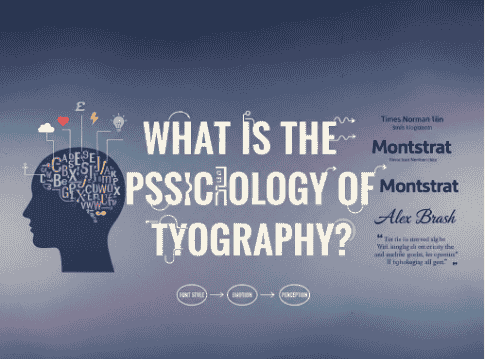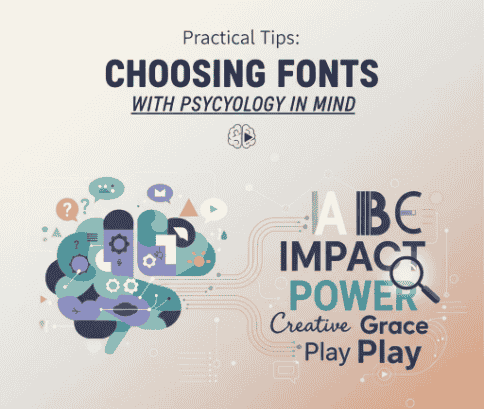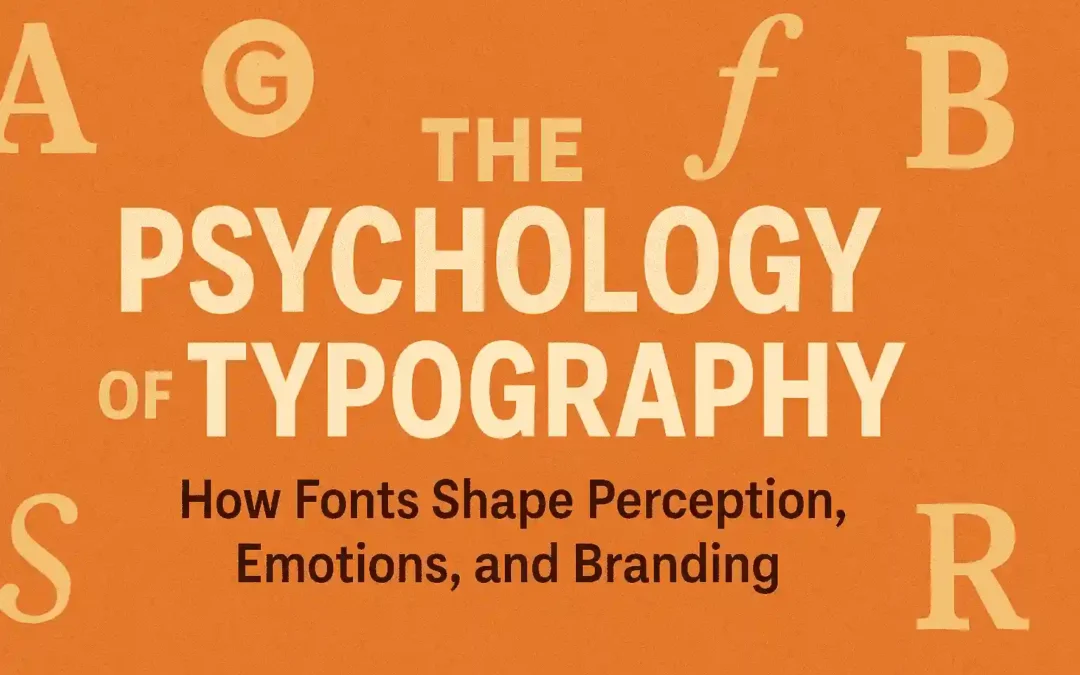Table of Contents
- Introduction
- What Is the Psychology of Typography?
- How Typography Influences Perception and Emotion
- Typography in Branding and Consumer Behavior
- Key Psychological Principles Behind Fonts
- Practical Tips: Choosing Fonts With Psychology in Mind
- Examples of Fonts That Trigger Emotional Responses
- Conclusion
1. Introduction
In the digital world, every visual element communicates something about your brand — and typography is no exception. Fonts are not just decorative elements; they act as silent messengers that influence how people perceive your content, brand, and even their decision to buy. This is where the psychology of typography comes into play.
By understanding how typography affects emotions and behavior, businesses can leverage fonts to build stronger brand identity, boost conversions, and connect with audiences on a deeper level.
2. What Is the Psychology of Typography?
The psychology of typography refers to the study of how typefaces affect human emotions, perceptions, and actions. Each font carries certain “personality traits” — playful, serious, elegant, bold, or trustworthy — and those traits impact how people interpret your message.
For example, serif fonts often communicate tradition and authority, while sans serif fonts are modern and minimal. Script fonts feel creative or romantic, while bold display fonts can express power and energy.
According to research published in The British Journal of Psychology , typography significantly influences credibility and trust in written content ( source).

3. How Typography Influences Perception and Emotion
Typography taps into subconscious associations. Here are some key examples:
- Trust & Professionalism : Serif fonts (like Times New Roman) signal reliability.
- Modernity & Simplicity : Sans serif fonts (like Helvetica) feel clean and minimalist.
- Creativity & Personality : Handwritten or script fonts showcase uniqueness and warmth.
- Urgency & Attention : Bold, condensed fonts create a sense of importance or speed.
Imagine reading a luxury brand website using a playful comic-style font — the mismatch would confuse customers. Aligning psychology fonts with your brand message is critical.
4. Typography in Branding and Consumer Behavior
Fonts don’t just decorate your brand; they influence buying decisions. A study by MIT revealed that typography impacts reading speed, comprehension, and even emotional engagement ( source ).
For example:
- A luxury skincare brand often uses elegant serif fonts to reflect sophistication.
- A children’s toy company relies on playful, bubbly fonts for project fun and excitement.
- A tech startup chooses minimalist sans serif typefaces to highlight innovation.
👉 On RaisProject, we design fonts specifically for different branding needs. For example, our Cute Handwritten Font is perfect for lifestyle or kids’ brands, while our Elegant Serif Fontenhances premium and beauty branding.
5. Key Psychological Principles Behind Fonts
Typography psychology is rooted in several design principles:
- Legibility & Readability – If users struggle to read your text, they are disengaged.
- Consistency – Using consistent typefaces builds trust and recognition.
- Alignment with Brand Personality – Fonts must “speak the same language” as your product.
- Emotional Trigger – Fonts evoke subconscious emotions that guide decision-making.
6. Practical Tips: Choosing Fonts With Psychology in Mind
Here are actionable strategies for selecting fonts:
- Define your brand voice (fun, serious, elegant, bold).
- Match the medium – digital screens vs. print materials may require different fonts.
- Limit your font palette – use 2–3 complementary fonts for clarity and hierarchy.
- Consider spacing and weight – not just the typeface, but kerning and line spacing affect perception.
Pro tip: A luxury brand might combine an elegant serif for headlines with a clean sans serif for body text to balance beauty with readability.

7. Examples of Fonts That Trigger Emotional Responses
Here are some font styles from RaisProject you can use to apply typography psychology effectively:
- Playful Branding → Try Rais Cute Handwritten Font— perfect for kids’ products, lifestyle brands, or social media creatives.
- Luxury Branding → Our Stylish Serif Fontworks beautifully for premium cosmetics or jewelry branding.
- Retro & Bold Brands → Check out Textured Bold Fontthat gives a strong, vintage-inspired impact.
- Minimalist & Modern Brands → Explore Sleek Sans Serif Fontfor startups or digital-first businesses.
Each of these fonts taps into specific psychological triggers: trust, fun, elegance, nostalgia, or innovation.
8. Conclusion
Typography is more than just “choosing a font.” It is a psychological tool that shapes perception, influences behavior, and builds emotional connections with your audience. By mastering the psychology of typography , you can elevate your brand presence, create stronger customer trust, and drive real results.
Whether you need playful, bold, or elegant fonts, RaisProjectoffers a wide variety of typefaces designed with branding psychology in mind.
📌 References
- American Psychological Association – The psychology of fonts
- MIT News – Typography choice affects cognition and emotion
- Nielsen Norman Group – Typography and user experience

